UK equipment maker JCB departed from normal practice this year to build a replica of a 30-tonne Mark IV tank in honour of a noted WWI anniversary.
The firm was approached months ago by TV personality Guy Martin to help make the gargantuan machine for a documentary about the British invention that helped break the trench deadlock in WWI, and would go on to change warfare.
Working from unusual 3D plans drawn up by a hobbyist modeller from Germany, employees at JCB’s World HQ used computer design technology to recreate the chassis of the historic machine in just eight weeks.
The team effort ensured the tank was operational and on display in Cambrai, Northern France on Armistice Day on Saturday, November 11th.
The time and place is significant as it marks the centenary of the Battle of Cambrai, where, in November 1917 more than 400 Mark IVs were deployed to overcome a sophisticated German defensive trench network.
With the documentary commissioned, Martin called on JCB because he had just five months to get an authentic reproduction of the 30-tonne tank built from scratch. Even by today’s standards it is a large beast. At more than 26 feet long and 10 feet wide, the 105 horsepower machine had a top speed of just four mph.
“When I first looked at this challenge, I thought ‘This is a big ask. We’re not going to see this happen.’ It is a massive undertaking and JCB was the main reason this was able to happen,” Martin said.
The profile parts were cut, rolled and bent into shape at JCB Heavy Products in Uttoxeter before being welded together at JCB’s World HQ in Rocester. A team from Norfolk Tank Museum assembled the engine and excavator tracks.
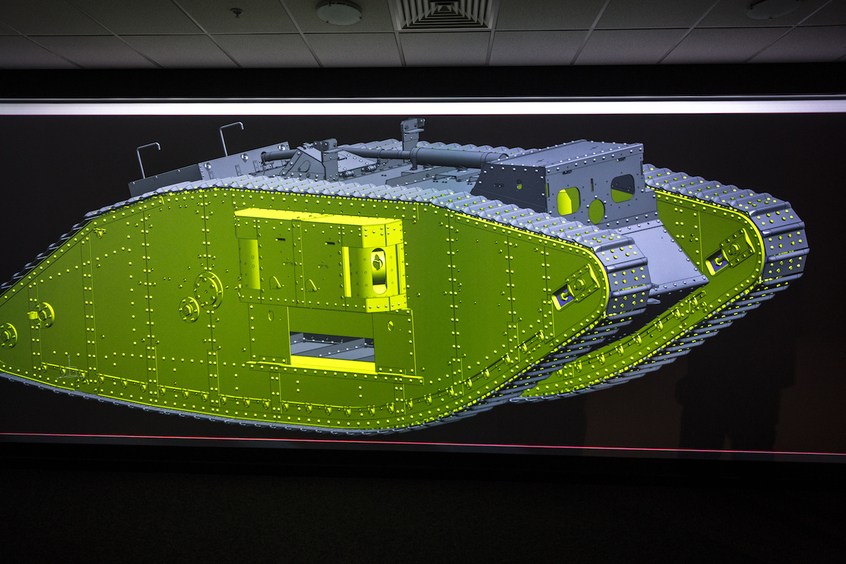
The CAD design for the tank came from a German model maker based on a Mark IV that was blown up in the Battle of Cambrai (JCB)
The tale has a twist in that the CAD design for the tank came from a German model maker who had created a near-perfect computer model based on a Mark IV that was blown up in the Battle of Cambrai and had been buried there for over 70 years.
The Mark IV emerged during a period of intense research and development in Britain as it faced stalemate in the trenches of France. It was only in February 1915 that the “Landships Committee” formed under Winston Churchill, then First Lord of the Admiralty, and began investigating the idea of a tracked battle vehicle.
The first tank appeared amid general consternation a year before Cambrai at the Battle of Flers-Courcelette in September 1916.
“The reproduction of a Mark IV tank from a century ago is a great British manufacturing story and that’s one of the reasons we wanted to get involved in the project,” said JCB chief engineer Martyn Molsom. “Replicating that innovation in a few weeks was a massive task, but modern techniques and equipment made it a lot easier for us than it would have been back then.”
Sections of the hull, including the centre cabin and two rhomboid side panels, were built separately and welded together in just 20 days – a process that would have taken considerably longer in 1917.
To make the replica look authentic, 3,000 fake rivets were attached to the replica using a robot welder.
The completed chassis was transported to Norfolk tank museum, near Norwich, where the remainder of the project took place. Two ‘sponsons’ – projections extending from the side of the machine – along with a roof section and other parts, also manufactured at JCB, were lifted into place before a restored six-cylinder Rolls Royce engine, tractor gearbox, tractor axles and excavator tracks were fitted.
The replica tank itself will return to the UK and will remain at the Norfolk Museum.
Channel Four’s documentary ‘Guy Martin’s WW1 One Tank’ airs on Sunday, 19 November at 8pm.
Top image: The team with the replica Mark IV (JCB)
- Edited 13/11/2017 to edit the date of the Battle of Flers-Courcelette, thank you for your comments.
Comments
Comments are closed.





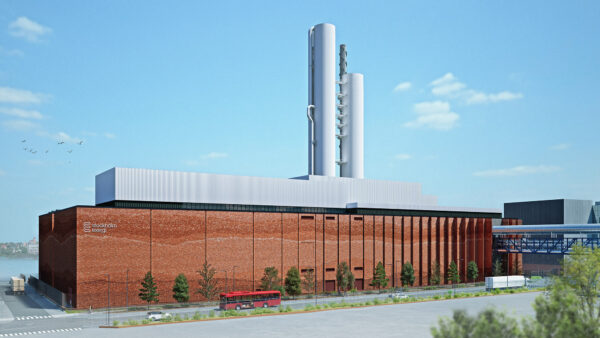
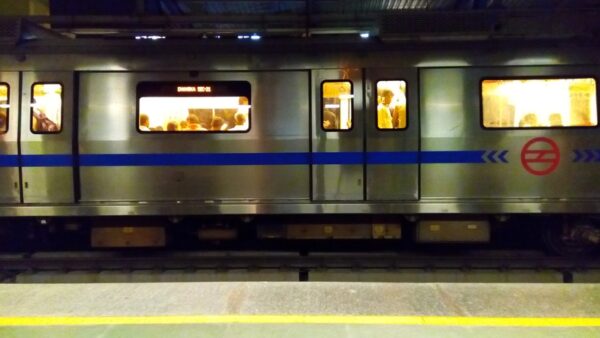
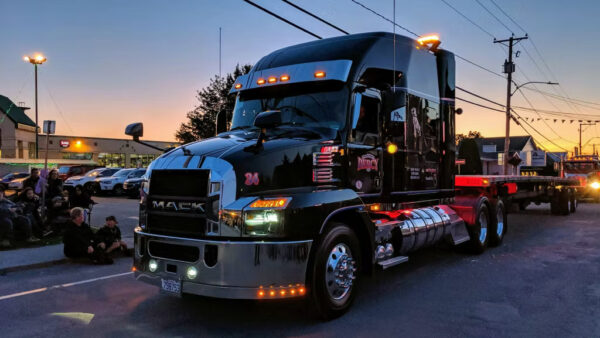

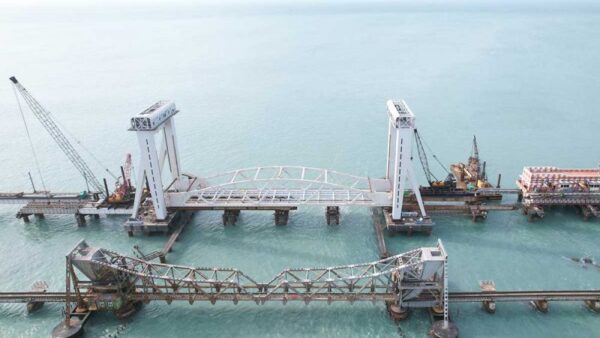

I think the dates in this article might be out by 100 hundred years e.g. Winston Churchill didn’t have a productive year in 2015 despite what the article says and the Battle of Flers-Courcelette was in 1916 not 2016!!
With all due respect to the individual I cannot see why they needed help from Germany. There are several preserved MkIV tanks in the UK including those in the Imperial War Museum and Bovington Tank Museum.
Incidentally tanks with 6pr guns were called “males” those with only machine guns were “females” while those with a combination of both were called “hermaphrodites”. They would never get away with that now!
Guy Martin is only doing what others have done before him.. his tank was just built quicker because he has more name and backing…. the Belgians have been working on a Replica Mark IV a lot longer, and they did not have as much support to build theirs. But it is running, and it IS in Cambrai even if they had to pay for most of the transport costs to get it to Cambrai out of own pocket!!
Does anyone know if the German model maker published his CAD drawings for the WW1 MkIV tank online anywhere? Ive been looking but i cant find anything that actually mentions they were used by JCB.